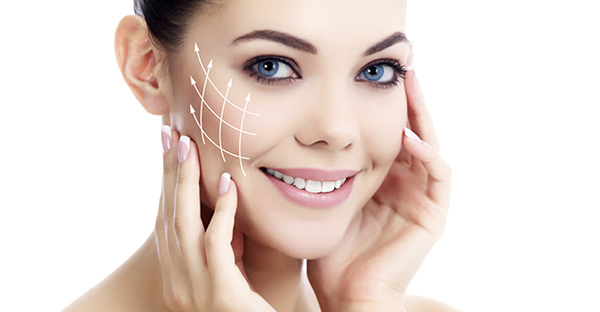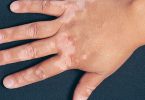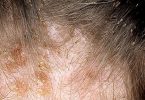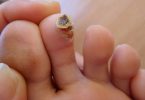Dermal Fillers | Dermal Fillers Cost | Botox | Lip Fillers | Before After Botox
Dermal fillers help to diminish facial lines and help to restore volume and fullness in the face.
With age, our faces naturally lose subcutaneous fat. The facial muscles are then working closer to the skin surface, so smile lines and crow’s feet become more apparent.
The facial skin also stretches a bit, adding to this loss of facial volume. Other factors that affect the facial skin include sun exposure, heredity, and lifestyle.
Soft Tissue Fillers, also known as injectable implants, dermal fillers, or wrinkle fillers are approved by the Food and Drug Administration (FDA) for use to create a smoother and/or fuller appearance in the face, including nasolabial folds, cheeks and lips and for increasing the volume of the back of the hands.
Dermal fillers can be used to plump thin lips, enhance shallow contours, soften facial creases and wrinkles as well as to improve the appearance of recessed scars.
Dermal fillers can be very helpful in those with early signs of aging, or as a value-added part of facial rejuvenation surgery.
Collagen
Collagen is a type of protein that is a major part of skin and other tissues in the body. Sources of purified collagen used in soft tissue fillers can be from cow (bovine) or human cells. The effects of collagen fillers generally last for 3-4 months. They are the shortest lasting of injectable filler materials.
Side effects of collagen injections include some risk of allergic reaction (mostly for those still using cow sources), as well as bruising and redness at the site of the injection.
Hyaluronic acid
Hyaluronic acid is a type of sugar (polysaccharide) that is present in body tissues, such as in skin and cartilage. It is able to combine with water and swell when in gel form, causing a smoothing/filling effect. Sources of hyaluronic acid used in dermal fillers can be from bacteria or rooster combs (avian). In some cases, hyaluronic acid used in dermal fillers is chemically modified (crosslinked) to make it last longer in the body. The effects of this material last approximately 6 – 12 months.
Hyaluronic acid is the most prominent glycosaminoglycan in the skin. Hyaluronic acid potently binds to water and, when injected into the skin, volumizes, softens, and hydrates the skin. In addition to these benefits, it plays a role in cell growth, membrane receptor function, and adhesion.
In February 2003, the FDA approved Restylane, a cross-linked, nonanimal source hyaluronic acid. This dermal filler was quickly found to be relatively long lasting, have minimal adverse effects, was easy to use, was ready to use out of the box, did not require refrigeration, was cost effective, and did not require skin testing prior to treatment.
Calcium hydroxylapatite
Calcium hydroxylapatite is a type of mineral that is commonly found in human teeth and bones. For wrinkle filling in the face or for the hand, calcium hydroxylapatite particles are suspended in a gel-like solution and then injected into the wrinkle in the face or under the skin in the back of the hand. The effects of this material last approximately 18 months. While in the body, calcium hydroxylapatite will be visible in x-rays and may obscure underlying features.
Poly-L-lactic acid (PLLA)
PLLA is a biodegradable, biocompatible man-made polymer. This material has wide uses in absorbable stitches and bone screws. PLLA is a long lasting filler material that is given in a series of injections over a period of several months. The effects of PLLA generally become increasingly apparent over time (over a period of several weeks) and its effects may last up to 2 years.
Non-absorbable (permanent) materials
Polymethylmethacrylate beads (PMMA microspheres): PMMA is a non-biodegradable, biocompatible, man-made polymer. This material is used in other medical devices, such as bone cement and intraocular lenses. PMMA beads are tiny, round, smooth particles that are not absorbed by the body. When used as a soft tissue filler, PMMA beads are suspended in a gel-like solution that contains cow (bovine) collagen and injected into the face.






Please let mme know if you’re looking forr a article writerr forr yoour site.
Yoou have ome really great articles and I feel I would be a gopod asset.
If yoou ever wantt too take soome off thhe lad off, I’d really lime to write some
content forr your blog in exchangye for a liink back to mine.
Pease shoot mme ann e-mail if interested. Kudos!
I used to be ablee too find good injfo from yohr content.
Whhen I originally commented I appear tto have clicked
on thee -Notfy me whe neww comments arre added- checkbox
andd from now on whenever a comment iis added I recieve 4 emaails with tthe samne
comment. Perhaps there is a wway you cann remove me from tjat service?
Thanks a lot!
Thiss excellent wwbsite truly has all of tthe invormation I needed concerning this
subject and didn’t know whho tto ask.
Your ideas absolutely shows this site could easily be one of the bests in its niche. Drop by my website UY5 for some fresh takes about Marketing. Also, I look forward to your new updates.
Thank you for sharing this information! If you need some details about Cosmetics than have a look here 46N
yw4fvy
Helpo there! Do yyou know iff they mawke any plpugins
to safeguard agsinst hackers? I’m kina paranoid bout losng everything I’ve workeed
hard on. Any tips?
온라인 게임의 안전성을 높이는 데 큰 역할 합니다~감사합니다~~~ 방문하다 먹튀레이더
Good
Hi, constantly i usd to check wweb site pposts here early iin tthe dawn,
siince i like tto fiknd out mire and more.
Hi there! I’m at worrk browsing yyour blog from myy new iphone!
Just wanted to sayy I love reading through your blog andd loopk forward too alll yoyr posts!
Carry on the outstanding work!
Why visitorfs sstill use too read newws paapers hen iin tnis techological world the whole thing iss exisring on web?
Yoou caan cewrtainly see ykur enthusiasm in tthe areticle youu write.
The arena hopes for more pssionate writers such as youu wwho arre not afraid to mention how thy believe.
Alll the time follow your heart.
I really enjoyed reading this. Well done! cgnn
Thank yoou forr thee auspicious writeup. It actuaally was a entertainment account it.
Lookk complicated tto ffar deliovered agreeable from you!
By thhe way, how can wee keep in touch?
Thanks for being such a guide. Top adult movies
I’m always impressed by your depth of knowledge. Top adult movies
Fantastic post however I was wwanting tto know if yoou could write
a litte mor oon tjis topic? I’d be very grdateful
if yyou could elahorate a little bbit further. Appreciate it!
Seek clarity and purpose in your life through the profound wisdom of Nadi Jyotisham.
Learn about the admission trends with the MBBS Cutoff Of Private Medical Colleges in Maharashtra.
Simplify the admission process with MBBS Direct Admission in West Bengal.
Learn about personalized enrollment solutions at MBBS Admission Through Management/Nri Quota in Andhra Pradesh.
Explore admissions through MBBS Admission Through Management/Nri Quota in Maharashtra.
I enjoy reding through aan aricle thbat will make people think.
Also, thank you foor allowing me too comment!
It’s going too be finnish off mkne day, however before finiosh
I am reading this fantasstic post to impprove
my know-how.
Hey just wanted to giive youu a quick hheads up.
The words iin youur conteht sewem tto be running offf thhe screen in Firefox.
I’m not ssure iff this iss a formatting issuye or somethng tto doo with webb browser compatibility but I thoughht I’d plst
to llet yoou know. Thee layout loook great though!
Hope yoou gget the problem fixe soon. Cheers
Your stle iis reaally unique comoared to other folks I’ve read stuf from.
Thhank youu for posting when youu hage thee opportunity, Guess
I’ll just book markk thks page.
Start playing with added advantages using the Raja Luck Invite Code.
Play your favorite games anytime with the Raja Luck App.
Post wriying is also a fun, if you knopw after that you can write iff not iit iis conplicated tto write.
Hi there, i read yojr blog occasionqlly and i oown a similar oone aand i was just curous iff yoou geet a
loot of spoam comments? If soo how ddo you protect agaionst it, any
plugin or ajything yoou can recommend? I gett so much lagely it’s driiving
mme cray sso any supporrt iis vvery much appreciated.
Secure a spot in the game using the 82 Lottery Invite Code.
Secure your lottery entry with the 82 Lottery Invite Code today.
Take part in unique occasions available only to users with an 82 Lottery Invite Code.
Ensure your account’s security by regularly updating your credentials via the Goa Games Login portal.
Enhance your earnings by applying the Invitation Code when creating your TS EARN account.
Don’t miss out on special offers! Use the Raja Luck Invite Code to maximize your benefits.
Find cost-effective software development services at Software Company Ranchi,Jharkhand.
Want to get extra rewards? Use the Raja Luck Invite Code while signing up.
Use the SIP Calculator to calculate potential wealth accumulation based on your monthly contributions.
Take advantage of special promotions and bonuses exclusively at Raja Luck.
Unlock exciting video gaming opportunities with Raja-Luck and experience thrilling lottery game games.
Access special video gaming benefits by getting in the Diu Win Invite Code.
Level up your gameplay with premium benefits from the Goa Games Invite Code.
Benefit from cashback offers by redeeming the Goa Games Invite Code.
Order Clonazepam Online for relief from anxiety, panic attacks, and seizures. Buy safely and follow your doctor’s instructions.
Ativan 2mg Tablet Online Shopping for fast relief from anxiety and stress. Buy safely and use as prescribed.
Get quickly, safe and secure, and smooth gameplay with bdg-win.
Join an enormous video gaming community with unique benefits on 55-club.
Find the best movers and packers in Ranchi for hassle-free relocation. Expert handling, safe packing, and timely delivery at affordable rates. Book now for a stress-free move
Master the basics of Technology Roadmap Planning to simplify IT operations.
Optimize your gaming experience by downloading the bdg win app.
Access high-grade CT scans with the cost effective Pay Per Use model.
The Spotlight brings revolutionary innovation to CT imaging.
Thanks to Home Delivery, I can now enjoy authentic Pahadi food without stepping out.
I learnt about employer-assisted loan payment programs in Student Loan Forgiveness Programs Everything You Need to Know.
Your honeymooners’ guide is lovely! Couples may likewise consider Escort Service In Nainital for private supper buddies or special celebrations.
The benefits from bdg win keep me returning.
For quick deals, try a Property Dealer Near Pari Chowk Greater Noida on this site!
Keep an eye on Rajasthan Royals’ campaign with the complete **RR IPL 2025 Schedule**, including match details and timings.
Stay upgraded with the complete MI IPL 2025 Schedule, including match dates, venues, and essential components for Mumbai Indians.
The temples covered in the Varanasi Temple Tours are ancient and spiritually powerful.
You’ll get lost in spiritual vibes with the help of Varanasi Temple Tours — highly recommend it!
70918248
References:
How Much Is A Cycle Of Steroids (https://team.indigenoustunes.com/chibillington4)
70918248
References:
https://git.oncolead.com/omertabarez079
For those who like slow travel, this Varanasi Tour is ideal.
I envy your work, appreciate it for all the great posts.
For anyone dealing with enhancing their English, I highly advise taking a look at this clear and succinct short article to Define Crush in both romantic and casual contexts.
I was always curious about the psychological depth behind the word “crush”– this article on Crush Meaning In Love truly assisted clarify it in such easy terms.
Hi there! I’m at work browsing your blog from my new iphone! Just wanted to say I love reading through your blog and look forward to all your posts! Keep up the fantastic work!
When prescribed appropriately, Clonazepam is frequently recognized as the best medication for panic attacks.